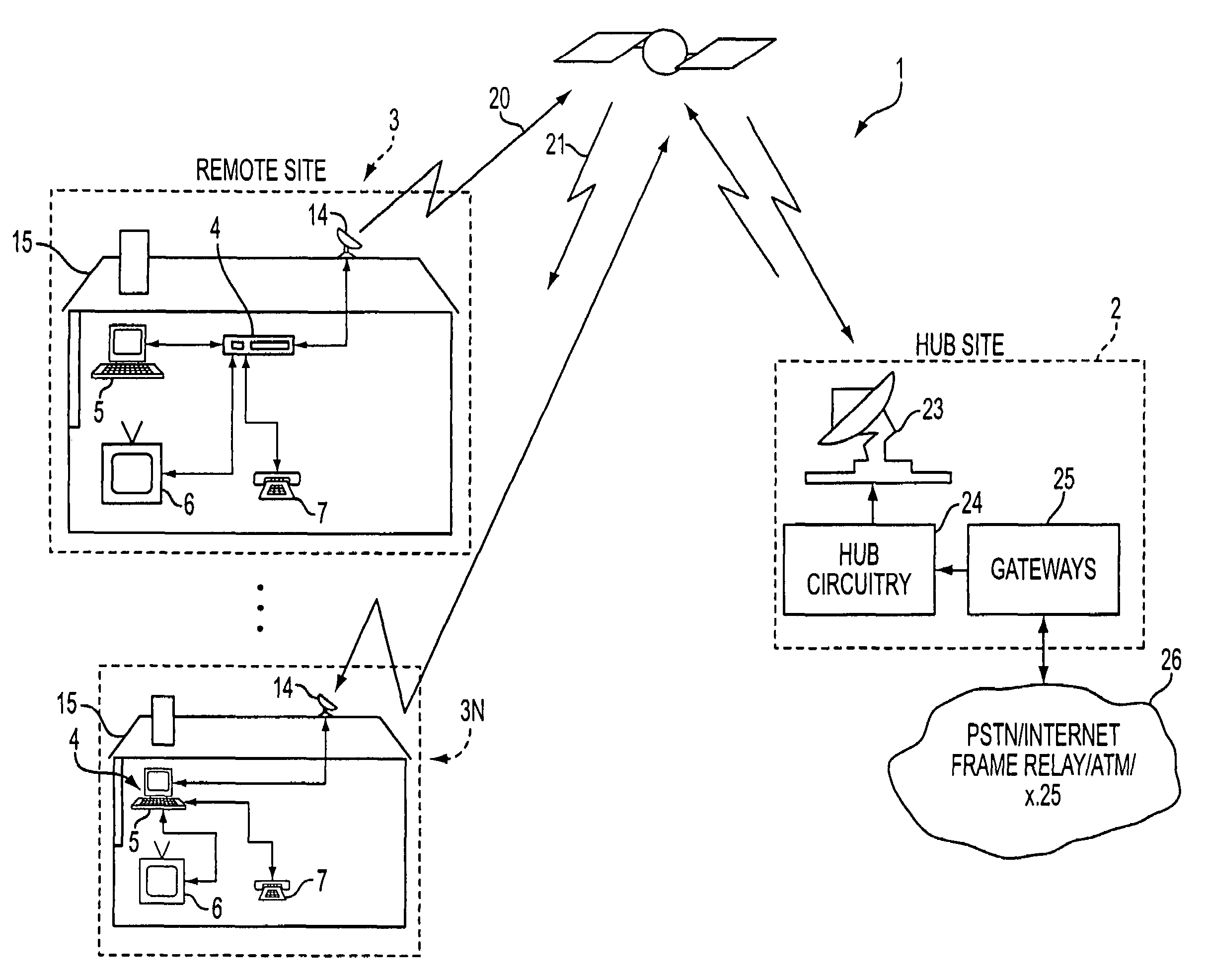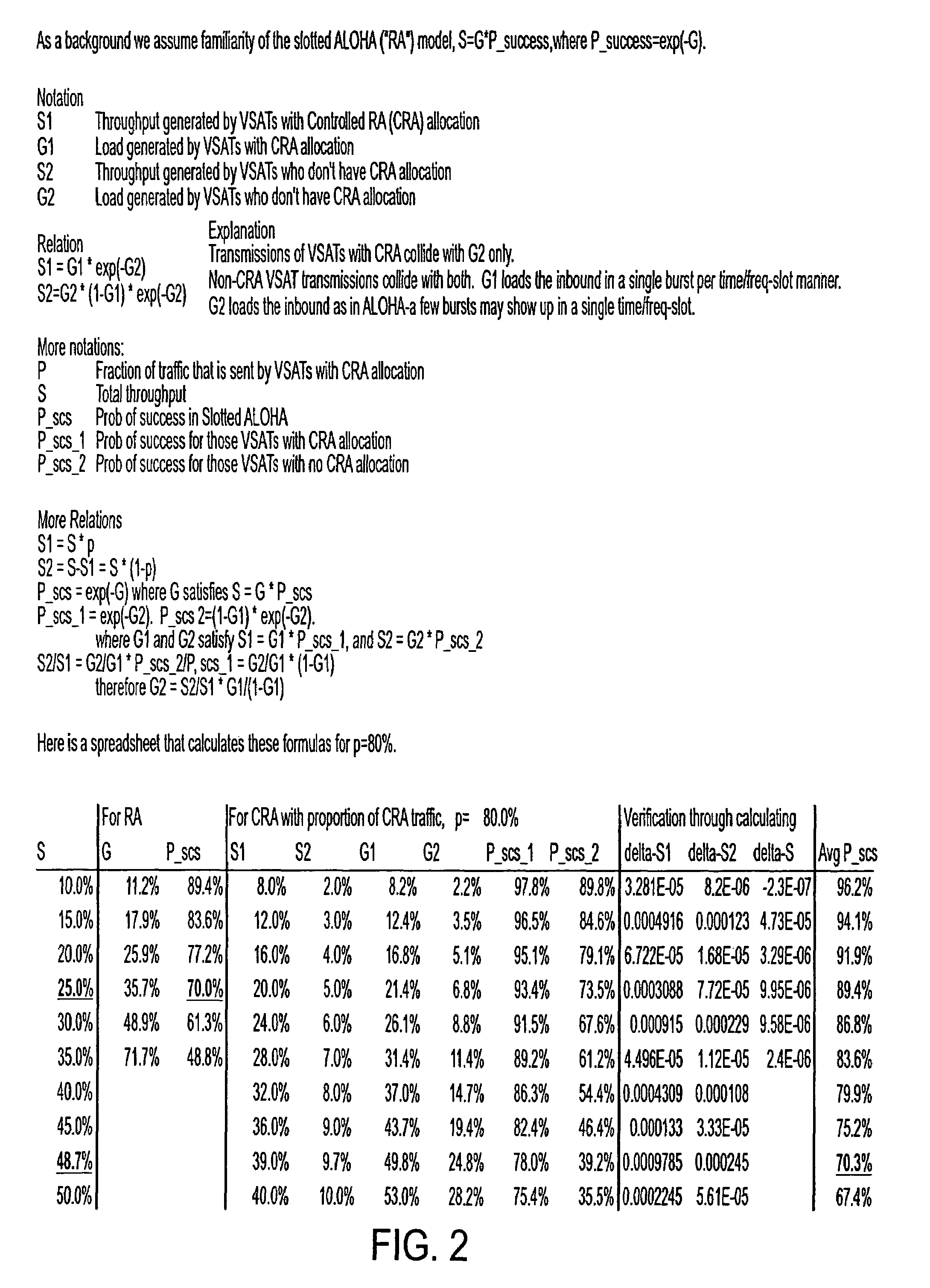System and method for satellite based controlled ALOHA
a control mechanism and satellite technology, applied in the direction of electrical equipment, radio transmission, transmission, etc., can solve the problems of limited maximum utilization under a given response time constraint, insufficient data transfer coordination between vsats and hubs, and insufficient data transfer. , to achieve the effect of reducing the average collision probability, reducing the requirement of inbound capacity, and improving delay characteristics
- Summary
- Abstract
- Description
- Claims
- Application Information
AI Technical Summary
Benefits of technology
Problems solved by technology
Method used
Image
Examples
example definitions
[0040]In this example, the following terms maybe utilized:[0041]CRA channel—a frequency, used for random access (CRA) transmission, on which remote sites 3 may transmit packets when using the controlled random access scheme[0042]Multi-slot—a number of time-slots, as used by the partial demand assignment mechanism.[0043]Mini-slot—one time-slot in a multi-slot cycle, i.e. one time-slot every multi-slot time-slots.[0044]CRA slot—a mini-slot in a controlled random access channel. This may be the basic allocation unit and may be a time slot within a certain uplink frequency.[0045]CRA allocation—The process of allocating controlled random access channels to a remote site.[0046]active remote site—a remote site to which at least one controlled random access slot was allocated.[0047]Inactive remote site—a remote site in which no CRA slot was allocated.[0048]CRA allocation table—a mapping between available CRA slots in the system and the remote sites to which they have been allocated.[0049]Lo...
PUM
 Login to View More
Login to View More Abstract
Description
Claims
Application Information
 Login to View More
Login to View More - R&D
- Intellectual Property
- Life Sciences
- Materials
- Tech Scout
- Unparalleled Data Quality
- Higher Quality Content
- 60% Fewer Hallucinations
Browse by: Latest US Patents, China's latest patents, Technical Efficacy Thesaurus, Application Domain, Technology Topic, Popular Technical Reports.
© 2025 PatSnap. All rights reserved.Legal|Privacy policy|Modern Slavery Act Transparency Statement|Sitemap|About US| Contact US: help@patsnap.com



